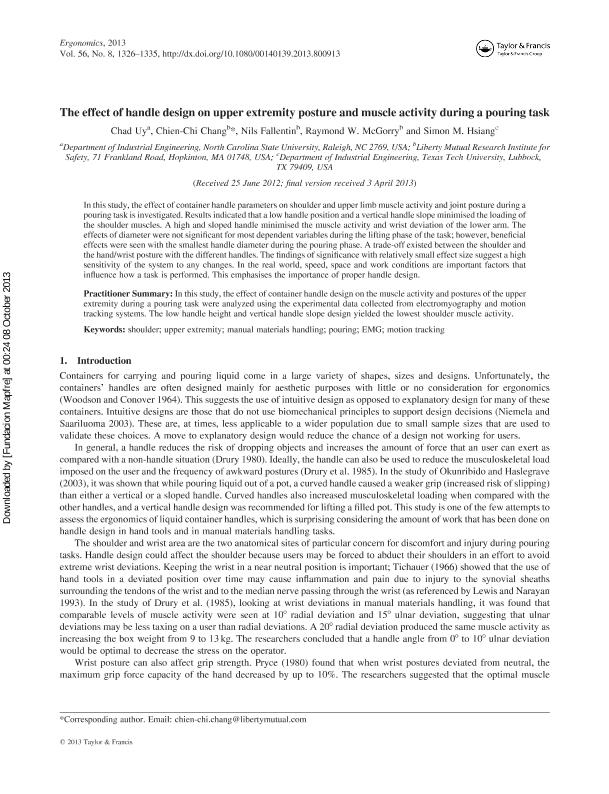The Effect of handle design on upper extremity posture and muscle activity during a pouring task

Contenido multimedia no disponible por derechos de autor o por acceso restringido. Contacte con la institución para más información.
| Tag | 1 | 2 | Valor |
|---|---|---|---|
| LDR | 00000cab a2200000 4500 | ||
| 001 | MAP20130032696 | ||
| 003 | MAP | ||
| 005 | 20131008170709.0 | ||
| 008 | 131008e20130805esp|||p |0|||b|spa d | ||
| 040 | $aMAP$bspa$dMAP | ||
| 084 | $a875 | ||
| 245 | 0 | 4 | $aThe Effect of handle design on upper extremity posture and muscle activity during a pouring task$cChad Uy...[et.al] |
| 520 | $aIn this study, the effect of container handle parameters on shoulder and upper limb muscle activity and joint posture during a pouring task is investigated. Results indicated that a low handle position and a vertical handle slope minimised the loading of the shoulder muscles. A high and sloped handle minimised the muscle activity and wrist deviation of the lower arm. The effects of diameter were not significant for most dependent variables during the lifting phase of the task; however, beneficial effects were seen with the smallest handle diameter during the pouring phase. A trade-off existed between the shoulder and the hand/wrist posture with the different handles. The findings of significance with relatively small effect size suggest a high sensitivity of the system to any changes. In the real world, speed, space and work conditions are important factors that influence how a task is performed. This emphasises the importance of proper handle design. | ||
| 773 | 0 | $wMAP20100019818$tErgonomics : the international journal of research and practice in human factors and ergonomics$dOxon [United Kingdom] : Taylor & Francis, 2010-$x0014-0139$g05/08/2013 Volumen 56 Número 8 - agosto 2013 , p. 1326-1335 |

